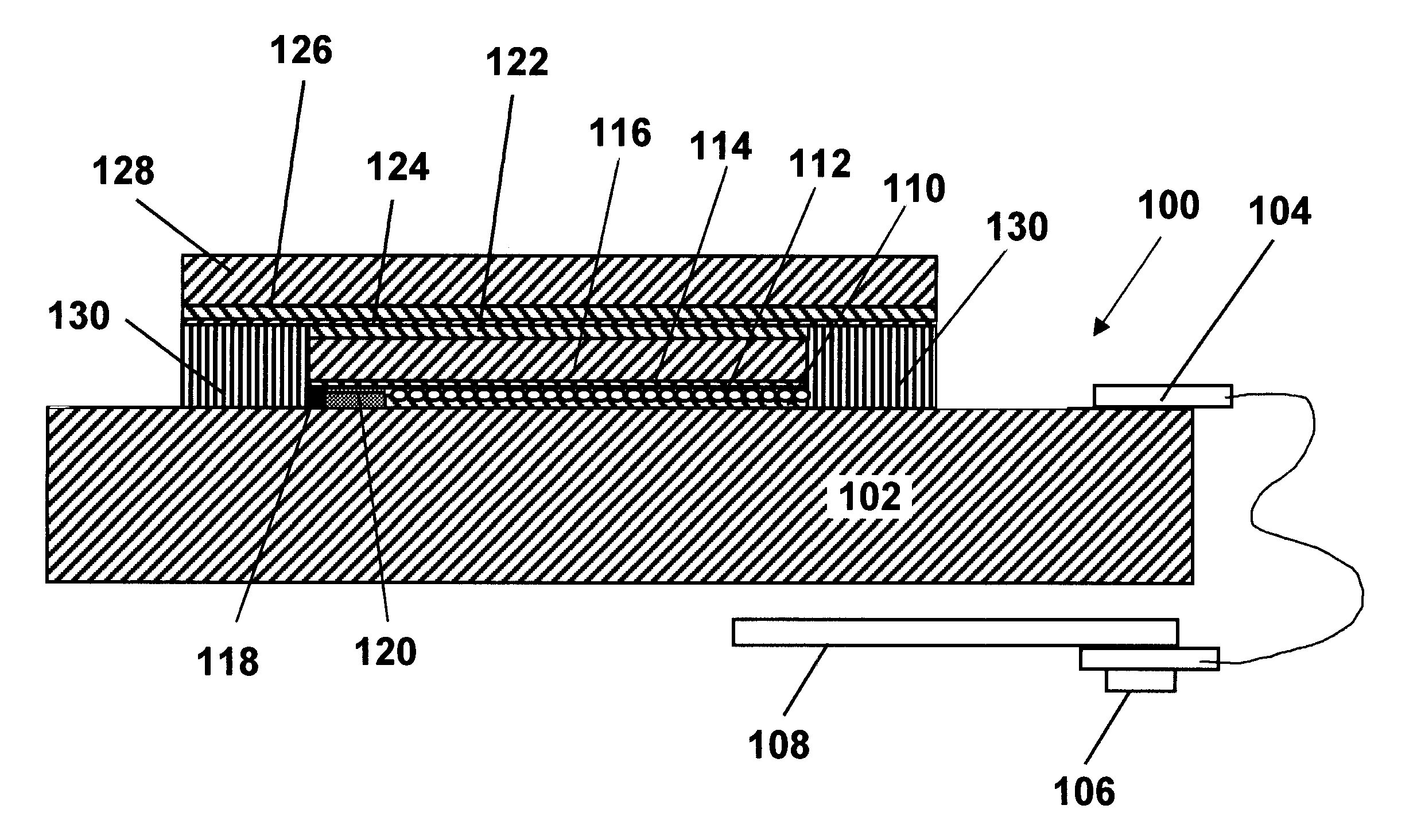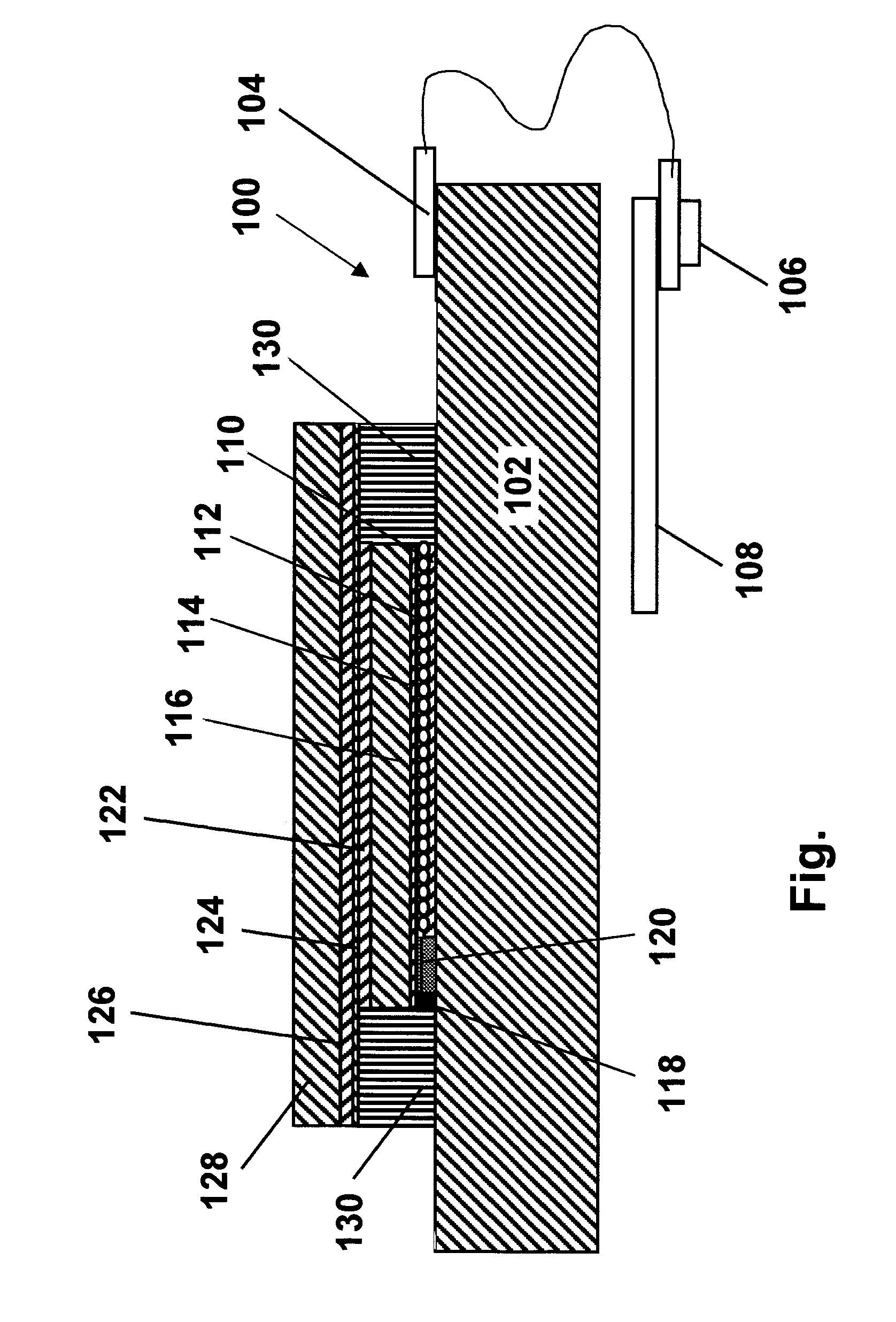Process for sealing electro-optic displays
a technology of electrooptic display and process, applied in optics, instruments, static indicating devices, etc., can solve the problems of inadequate service life of electrophoretic media, preventing widespread use, and prone to the same types of problems
- Summary
- Abstract
- Description
- Claims
- Application Information
AI Technical Summary
Benefits of technology
Problems solved by technology
Method used
Image
Examples
Embodiment Construction
[0038] As already mentioned, the present invention provides a process for providing an edge seal in an electro-optic display. The display comprises a backplane; a layer of electro-optic material disposed adjacent the backplane; and a protective layer capable of absorbing ultra-violet (UV) radiation and disposed on the opposed side of the layer of electro-optic material from the backplane. The protective layer extends beyond the edge of the layer of electro-optic material, thereby defining a peripheral region in which a gap exists between the protective layer and the backplane. To form the edge seal, there is placed in the gap an uncured edge sealing material curable by radiation transmitted by the protective layer, and radiation effective to cure the edge sealing material is transmitted through the protective layer, thereby curing the edge sealing material and forming an edge seal in the gap.
[0039] Thus, in accordance with this invention, the edge seal is formed from a edge sealing...
PUM
| Property | Measurement | Unit |
|---|---|---|
| wavelength | aaaaa | aaaaa |
| wavelength | aaaaa | aaaaa |
| wavelength | aaaaa | aaaaa |
Abstract
Description
Claims
Application Information
 Login to View More
Login to View More - R&D
- Intellectual Property
- Life Sciences
- Materials
- Tech Scout
- Unparalleled Data Quality
- Higher Quality Content
- 60% Fewer Hallucinations
Browse by: Latest US Patents, China's latest patents, Technical Efficacy Thesaurus, Application Domain, Technology Topic, Popular Technical Reports.
© 2025 PatSnap. All rights reserved.Legal|Privacy policy|Modern Slavery Act Transparency Statement|Sitemap|About US| Contact US: help@patsnap.com


